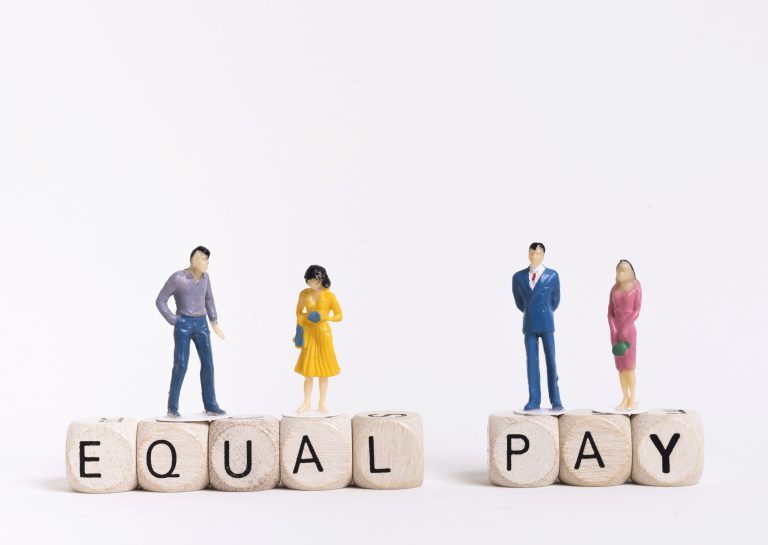The European Council adopted a new pay transparency directive in 2023 to close the gender pay gap in the European Union, where women earn, on average, 13% less than their male counterparts per hour (Eurostat data from 2021). The EU member states have until June 2026 to incorporate the directive into national laws.
The new rules bring new responsibilities for employers, as the burden of proof in pay discrimination cases now falls upon the company, not the employee.
With the new legislation on its way, here are nine essential facts about the gender pay gap, the new regulations addressing it, and how employers must prepare.
1. What is the directive about?
Under the directive, EU companies will be required to share information about how much they pay women and men for work of the same value and take action if their gender pay gap exceeds 5%. There are provisions on compensation for victims of pay discrimination and penalties, including fines, for employers.

2. Transparency is paramount
The new directive targets the lack of pay transparency, which blocks victims from bringing claims.
The rules will make it mandatory for employers to inform job seekers about the starting salaries or salary ranges of advertised positions.
The directive also ensures the job candidates’ right not to be asked about their pay history, another measure to avoid the perpetuation of gender bias.
Once in the role, workers will be entitled to ask their employers about average pay levels (broken down by sex, for categories of employees doing the same work or work of equal value) and the criteria used to determine pay and career progression. Employers should review their standard employment contract and remove any pay confidentiality clause that may be present, as this will now be prohibited.
Workers who have suffered gender-based pay discrimination may be eligible for compensation, which could include full recovery of back pay, bonuses, or other forms of remuneration.
3. Prepare for stricter gender pay gap reporting
Companies with over 150 employees in the EU will be required to report on the gender pay gap in their organization to the relevant national authority and to take action if the report reveals a pay gap of more than 5% that gender-neutral criteria cannot justify.
Businesses with more than 250 employees will be required to submit reports on an annual basis from 2027, whereas those with 150-249 employees will have to do so every three years from 2031.
4. Non-compliance may result in sanctions
Suppose your company’s periodic report reveals a pay gap of more than 5% that gender-neutral criteria cannot justify. In that case, according to the new legislation, you must either justify it or conduct an equal pay audit.
The equal pay audit includes a collaborative pay assessment with input from both employee representatives (trade unions) and employers, with the option to invite an independent expert. The assessment should consider all relevant factors that may justify the pay gap, such as experience, education, qualifications, and work complexity. If disproportionate differences are present, the audit must present actions to reduce or eliminate them.
The employer is required to carry out the proposed actions within six months of the audit’s completion. Failure to do so may result in sanctions.
5. The burden of proof now falls upon the employer
Behind the directive’s focus on increasing transparency is the goal of freeing the employee from the burden of proof in pay discrimination cases. Now, it will be up to the employer to prove not guilty.
6. What’s behind the gender pay gap?
Equal pay between women and men has been a right in the European Union since 1958; however, its implementation has long been challenging as the gender pay gap is a complex matter with several different causes. Additionally, it often goes undetected due to a lack of pay transparency.
According to Eurostat, some facts and data about gender inequality include:
- Career interruptions: 91% of the career breaks due to childcare are taken by women.
- Gender imbalance in leadership roles: Men hold 65% of all management positions.
- Part-time work: Women are 75% of all part-time workers.
- Job segregation: Women take 73% of the jobs in the lower-paid sectors of education, health, and social work.
7. Consequences of the gender pay gap
Unequal pay puts women at greater risk of poverty, especially during old age. Older women are more likely than men to live in deprivation because, during their active years, they face more blocks to prepare for retirement, as they are more subject to lower salaries, working in the informal sector, and taking career breaks to care for dependents, according to the European Institute for Gender Equality (EIGE). As a result, the EU’s pension pay gap stood at around 30% in 2018.
8. The unadjusted pay gap in European tech is at 26%
The unadjusted pay gap is a metric that compares average gross hourly earnings, not considering factors like education or experience, and often reveals a lack of equal access to opportunity, such as representation in higher positions.
A recent report on pay equity within the European workforce, published in May this year by compensation platform Ravio, reveals that the gender pay gap reduces as the job level increases in the tech industry. However, the representation of women is deficient at these higher job levels, with only 19% of executive positions in European start-ups held by women. As a result, the industry’s unadjusted gender pay gap in Europe is at 26%.
9. What results to expect?
Gender bias in pay systems is often unconscious, and the European Council acknowledges it when it states that the pay transparency directive “can help raise awareness of the issue among employers and help them identify discriminatory gender-based pay differences that cannot be explained by valid discretionary factors and are often unintentional.”
As a society, we shouldn’t expect these new rules alone to solve the multifaceted, complex roots of the gender pay gap. Nevertheless, the EU’s new directive is a significant step forward in addressing pay inequality between men and women by focusing on pay transparency and enforcement mechanisms.
For employers, it’s essential to gather data to identify existing differences while preparing key staff for the new requirements, such as the periodic reports. Besides that, they should also introduce a transparent pay system with clear, understandable, and gender-neutral criteria for remuneration, promotion, and bonus allocation.
The report by Ravio mentioned earlier shows that 5% of employers are still unaware of the legislation. It’s important for employers to consider the benefits they can reap by proactively preparing for the new regulations: promoting equal opportunities and ensuring fair compensation can improve employee satisfaction and enhance the company’s standing in the market as an equitable and conscientious employer, drawing in talented individuals and propelling business growth.
Subscribe to our newsletter
Enjoying our content? Subscribe to the TechTalents Insights newsletter and get our best articles and interviews delivered directly to your inbox. Click here to join the community!




